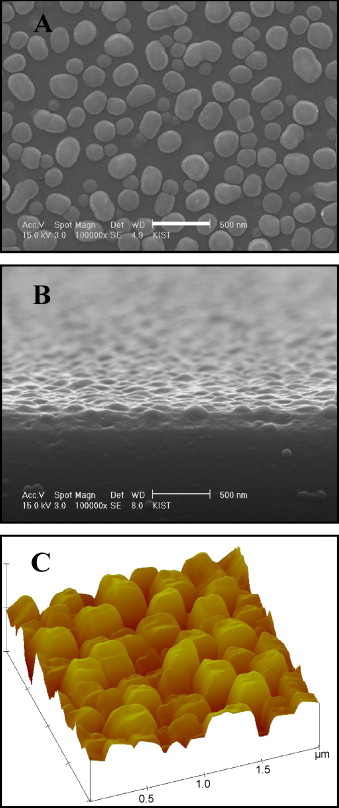DLC Nanodot Surfaces for Tribological Applications in MEMS Devices
슈퍼관리자
2021-05-21
DLC Nanodot Surfaces for Tribological Applications in MEMS Devices
-
Authors :
R. Arvind Singh, Kyoung hwanNa, Jin WooYi, Kwang-Ryeol Lee, Eui-SungYoon
-
Journal :
Appl. Surf. Sci.
-
Vol :
257
-
Page :
3153
-
Year :
2011

Abstract
With the invention of miniaturized devices like micro-electro-mechanical systems (MEMS), tribological studies at micro/nano-scale have gained importance. These studies are directed towards understanding the interactions between surfaces at micro/nano-scales, under relative motion. In MEMS devices, the critical forces, namely adhesion and friction restrict the smooth operation of the elements that are in relative motion. These miniaturized devices are traditionally made from silicon (Si), whose tribological properties are not good. In this paper, we present a short investigation of nano- and micro-tribological properties of diamond-like carbon (DLC) nano-dot surfaces. The investigation was undertaken to evaluate the potential of these surfaces for their possible application to the miniaturized devices. The tribological evaluation of the DLC nano-dot surfaces was done in comparison with bare Si (1 0 0) surfaces and DLC coated silicon surfaces. A commercial atomic force microscope (AFM) was used to measure adhesion and friction properties of the test materials at the nano-scale, whereas a custom-built micro-tribotester was used to measure their micro-friction property. Results showed that the DLC nano-dot surfaces exhibited superior tribological properties with the lowest values of adhesion force, and friction force both at the nano- and micro-scales, when compared to the bare Si (1 0 0) surfaces and DLC coated silicon surfaces. In addition, the DLC nano-dot surfaces showed no observable wear at the micro-scale, unlike the other two test materials. The superior tribological performance of the DLC nano-dot surfaces is attributed to their hydrophobic nature and the reduced area of contact projected by them.















